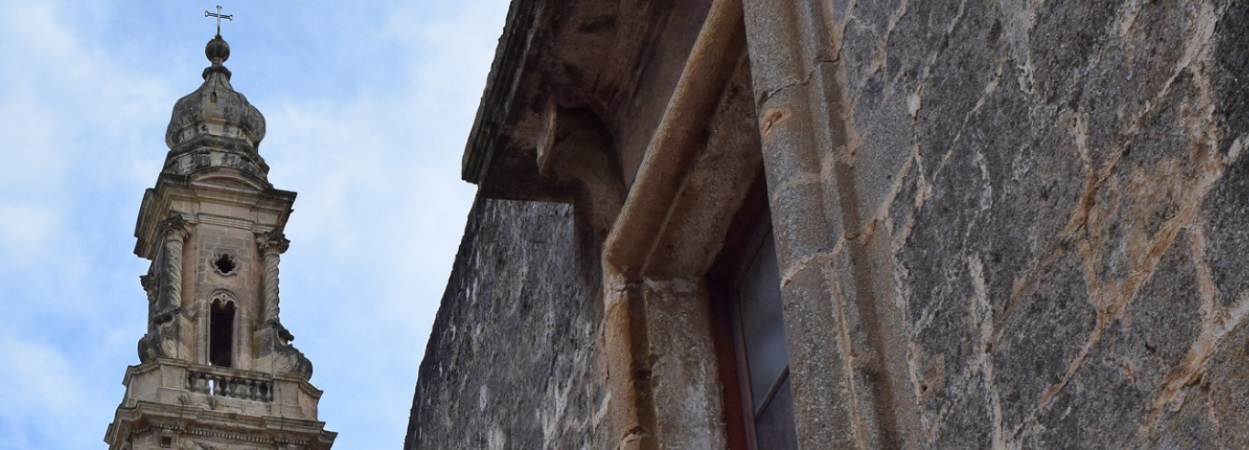
Trepuzzi is historically inserted in the Terra d’Otranto and, better, in the province of Lecce.
It represents and recalls, for its part, the very ancient Japigia, Messapia, Calabria and Salentina. It is certain that Aristotle (four centuries before Christ), Herodotus, Antiochus, Scillace, Thucydides, Pausanias, Strabo, Ptolemy, and many other historians and geographers, some more, some less, described it in their works and made it honourable to remember.
It was the most considerable and extensive part, the land of Otranto, of Magna Graecia, a marvel of pagan civilisation.
Trepuzzi has obviously followed the fortunes and vicissitudes of invasions and denominations, for centuries, by the Romans, the Goths, the Greeks, the Lombards, the Normans; subjected later to the Swabians, the Angevins, the Principality of Taranto, the Aragonese, the Turks who sacked it, the French and once again the Bourbons and finally the Royal House of Savoy.
A pagan legend has it that in the area near S. Angelo, in Roman times, there was an area dedicated to Bacchus where the patricians of the nearby Lupiae met for Bacchanalia with parties, dances, revelry, revelry and orgies, hence the name ‘Tripudium’ given to the place.
The fact that the municipal coat of arms bears three wells only shows that at a certain point in Trepuzzo’s history the ‘wells’ version prevailed. Instead, the etymology Tripudium is more logical, especially in the mention of Galateo, where in “triputeanam villulam” is clearly evident the root tri and not three as it should be the cardinal number tres, if they wanted to indicate the three wells. That then the voice trepuzze has been corrupted, this derives from the fact that there really were the three wells in the first populated nucleus, in addition to the original, and after the disappearance of Terenzano, to the benefit of Trepuzzi that was enlarged and better located along the main road of great communication: the Adriatica. It follows that the two versions are not opposed but complementary.
In fact, the original etymology remains ‘Tripudium’, only that later, to the place of Tripudio, another settlement was added, with three wells, which absorbed and made the first one decay.
Subsequently, the town expanded to include both localities; what was a new area became the old centre and vice versa. In addition, it should be considered that by a curious coincidence, both Tripudium and Treputium may well be recognized in Trepuzzi, which seems the synthesis of the two words.
The first documentary traces of this name date back to 1190, when King Tancredi, Count of Lecce, was crowned. After the death of King William the Good, his uncle, he donated some places to the Bishop of Lecce and assigned to him, by diocese, all the hamlets of his countryside, among which was Trepuzze.
Fulgo or Fulgone Bello Leccese, councillor of William the Good, a Lecce patrician, was bishop of Lecce from 1180 or 1183 to 1200 and therefore also pastor of Trepuzzi, which became part of the diocese, thanks to the donation given in 1190 by King Tancredi.
The descent of the Normans into Apulia took place in 1072. They introduced the devotion to the Assumption and Trepuzzi is among the towns that venerate the Virgin. So, the devotion to Our Lady of the Assumption, patron saint of our town, has a tradition dating back to 1072.
The feud of Trepuzzi and the Subfeud of Terenzano belonged to the Counts of Conversano, Lords Acquaviva D’Aragona, on whom the title of Marquis, so Marchesal Corte di Trepuzzi.
This feud, quite important, was the subject of several disputes, which arose between the hereditary of the Lords Acquaviva, and was seized several times by the Royal Treasury, for the lack of direct heirs, until in 1725, Duke Francesco Carignani, also inheriting, was given the task of governing it.
Later, the same Duke Francesco Carignani bought the Feud of Trepuzzi and the Subfeud of Terenzano in 1753.
